
This framework is a guide for all employees at CSE. It sets our ambition as an organization that deliberately supports equity, diversity, and inclusion.
On this page
Message from the Chief and Associate Chief of CSE
Over the past few years, we have watched a global health crisis unfold amid much hope and humanity, but also at the same time as heinous acts of racially motivated discrimination and violence, and the reminder of past social injustices. CSE is home to a diversity of employee networks that bring together members of those facing systemic barriers and their allies. We also acknowledge we each have a role to play in building the more consistently just, inclusive, and respectful community we want and need.
At CSE, we are investing in building a community where our inspired workforce has what is needed to succeed and contribute fully to our mission success: thought-leading innovation that helps secure a digital Canada, provides a Canadian information advantage, and achieves strategic impact through cyber operations. As a modern and dynamic organization, our goal is that every employee feels – every day – like a valued, contributing member of a welcoming, high-functioning, and respected community.
This framework will help us institutionalize equity, expand diversity, and promote an inclusive community at CSE. This is not just the right thing to do. It is our mission imperative. The complex problems we face require a wide range of perspectives, skills, and mindsets to tackle them. Through this framework, we will advance five strategic elements in a principles-based approach to fostering equity, diversity, and inclusion.
- Learning from mistakes of the past
- Bolstering the effectiveness of our mission through engaging the full diversity of our organization
- Institutionalizing diversity into our corporate practices and processes
- Measuring efforts and tracking progress and
- Creating positive experiences
This framework will guide us – one and all – to build a more inclusive community at CSE. It includes broad principles, a strategy and an ever-green action plan of initiatives designed to make our ambitions a reality. We encourage all of you to be active participants. Because it is our individual and collective responsibility to address the challenges of exclusion and all forms of discrimination.
And we are better – in every way – when we recognize and celebrate that mosaic that is One CSE.
Shelly Bruce, Chief | Dan Rogers, Associate Chief
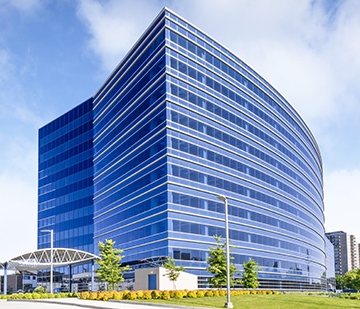
Land acknowledgment
CSE’s campus includes facilities at the Edward Drake Building on Ogilvie Road and on the Vanier Parkway in Ottawa. We acknowledge that these locations are on the traditional territory of the Anishinaabe Algonquin Nation who have been on this land since time immemorial. We recognize the important history of their stewardship of this land for millennia and understand their contribution to its present and future wellbeing. In the spirit of reconciliation, we acknowledge all Indigenous People across Canada and their connection to this land. As Public Servants, we recognize our obligation to learn about Indigenous history – including the history of residential schools – and to work toward the implementation of the Truth and Reconciliation Commission’s Calls to Action, and the implementation of the United Nations Declaration on the Rights of Indigenous Peoples.

Purpose of the framework
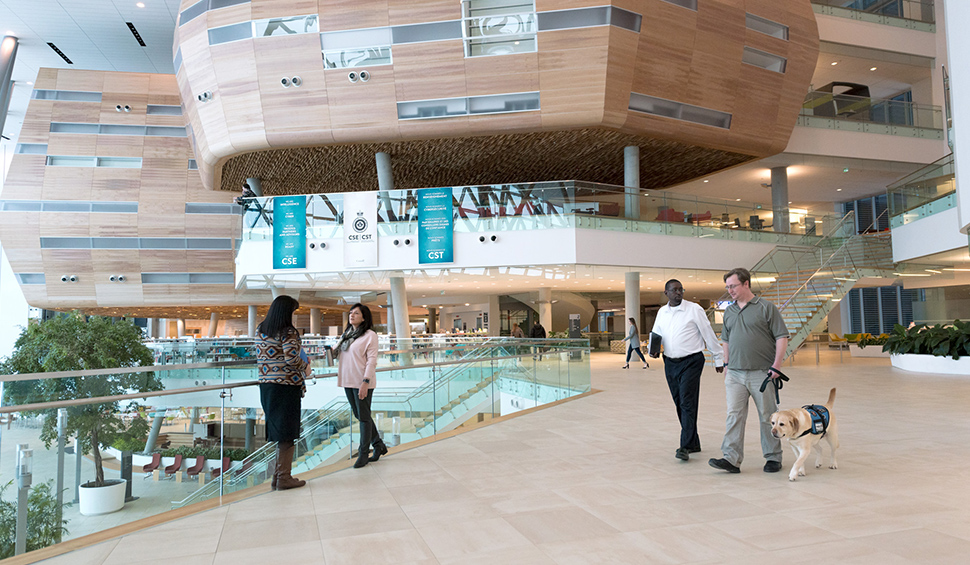
This framework is a guide for all employees at CSE. It describes the nature of our diverse community and how we intend to support it. It provides context for our work environment and sets our ambition as an organization that deliberately supports equity, diversity, and inclusion. It aims to support our diverse workforce by breaking down systemic barriers to people’s full participation at work. It compels us to integrate diversity and inclusion in our operations to ensure that we meet the needs of all Canadians in pursuit of our mission. It is everyone’s job to contribute to its implementation.
Nurturing an equitable, diverse, and inclusive environment at CSE is essential. It is part of Canada’s legal framework. As a public service institution and a key member of Canada’s defence, security and intelligence community, equity, diversity, and inclusion are integral to our policy obligations.
We are a more effective organization if our people, our operations, and policies advance the principles of equity, diversity, and inclusion. As a security and intelligence organization it is essential we have a comprehensive view of our operating environment and that we integrate broad perspectives, experiences, and worldviews into our operations. We contribute to that goal by having a more diverse workforce. That diversity is key to the pursuit of our mission.
We need to be equitable and inclusive so that our people do not face systemic and overt discrimination. Fighting discrimination takes energy and time. It affects an individual’s and an organization’s mental health and wellbeing. Eliminating barriers and deliberately building an inclusive organization contributes to a healthy workplace and aims to remove significant drivers of anxiety and stress. It will help all of us individually and collectively dedicate our time and energy in pursuit of CSE’s mission.
Pursuing equity, diversity and inclusion also demonstrates to Canadians that CSE is committed to serving all of them. By reflecting Canadian society, CSE builds awareness, credibility, and support among the population we serve. That support is essential for our license to operate in a complex global environment where our work needs to be protected. These efforts can break down historic negative perceptions of Canada’s defence, security and intelligence community as discriminatory and exclusive. Canadians need to see themselves and their concerns in our people and our mission.

At the end of the day, the purpose of the framework is to guide all of us at CSE. To help us be better and more effective at serving all Canadians. It will help create a culture focused on inclusion and wellbeing, where all of us can contribute fully to our important mission. We can act as leaders in our own organization but also across the Government of Canada and in the technology and cyber sectors. We can contribute to a more inclusive Canada for everyone.
The framework is broken into three components:
- Principles-based approach to equity, diversity and inclusion
- Strategy to support the principles
- Evergreen action plan of initiatives to support equity, diversity and inclusion at CSE
Context
Diversity is a foundational concept for Canada – a nation that initially aimed to bring together French and English in common enterprise. Diversity is only a description of who we are. It does not mean inclusion. In its early days, Canada was anything but inclusive. The legacy of colonialism still affects Indigenous Peoples and racialized communities across this country. Equity and inclusion are goals we strive for as Canadians and are a work in progress. As public servants, we at CSE are committed to pursuing those objectives. As a security and intelligence organization, we recognize that these goals are essential to us effectively pursuing our mission.
When we speak about the aspirational goals of equity and inclusion, we must be clear about what they mean. Equity means fairness and achieving parity in policy, process, and outcomes for historically or currently under-represented or marginalized people and groups. It considers power, access, opportunities, treatment, effects, and outcomes. Inclusion is an active, intentional, and continuous process to address inequalities in power and privilege and build a respectful and diverse community that ensures welcoming spaces and opportunities to flourish for all.Footnote 1
It is important to acknowledge the millennia-old history of the territory that today is Canada. It was populated by many distinct Indigenous Peoples who lived across this land for generations before European settlement. We need to recognize the history of colonialism that brought French and English settlers to this continent and that this fundamentally changed the nature of this land. We need to recognize the waves of migration from outside of Europe – from Asia, Africa, the Americas, and the Middle East that have contributed to a unique blend of cultures and identities which today shape Canada. This history was often violent and contributed to systems that privileged some and marginalized and discriminated against others.
For decades, Canadians have worked hard to counter that legacy and build a more inclusive society. Gains made by women, Indigenous Peoples, official language minorities, racialized communities, persons with disabilities, 2SLGBTIQ+ persons, religious minorities and others have been hard won. Often, they involved litigation and advocacy. Too often the legacy of exclusion and discrimination lingers and requires a deliberate effort to redress a historic wrong and return to Justice.
“We describe for you a mountain. We have shown you a path to the top. We call upon you to do the climbing.”
There is also a need for individual self-reflection. Wrongs committed are also the product of our attitudes and actions. We need to be mindful of the effect our words have on our colleagues. It is important for us to know our own conscious and unconscious biases and the effect they have on a person’s sense of belonging. It is important to reflect on who we engage, the language we use, and whether we have created our own spaces that are safe for immediate colleagues. By looking at these issues at both an organizational and personal level, we can move toward a more inclusive environment.
Today, Canada’s legal framework supports a normative approach to diversity. The Canadian Charter of Rights and Freedoms (the Charter) enshrines equality rights for all Canadians. It recognizes the formal linguistic duality of our country and inherent rights of Indigenous Peoples. It enshrines gender equality and multiculturalism. Canada’s constitutional framework is supplemented by a range of international conventions and declarations that further describe our obligations. These include:
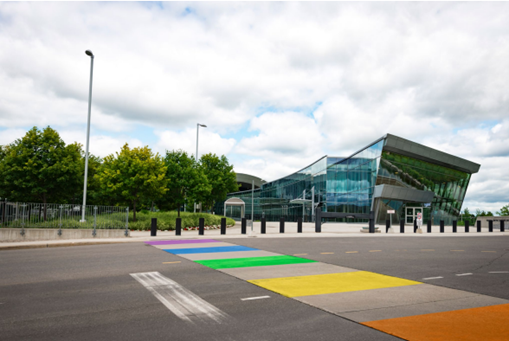
- Convention on the Elimination of (All Forms of) Racial Discrimination – 1966
- International Covenant on Civil and Political Rights – 1966
- International Covenant on Economic, Social and Cultural Rights – 1966
- Convention on the Elimination of Discrimination against Women – 1979
- Convention on the Rights of Persons with Disabilities – 2006
- United Nations Declaration on the Rights of Indigenous Persons – 2007
The Canadian Human Rights Act (CHRA) also provides an important legal basis for countering various forms of discrimination and identifies key aspects of diversity that CSE will advance. Prohibited grounds of discrimination in the CHRA include race, national or ethnic origin, colour, religion, age, sex, sexual orientation, gender identity or expression, marital status, family status, genetic characteristics, disability, and conviction for which a pardon has been granted.
The CHRA and the Charter are complemented by a series of statutes related to equity, diversity and inclusion. These include:
- The Indian ActFootnote 2
- The Official Languages Act
- The Canadian Multiculturalism Act
- The Employment Equity Act
- Public Service Employment Act
- Federal Public Service Labour Relations Act
- Accessible Canada Act
Legislation is accompanied by a wide range of Government of Canada and CSE policies that direct and support us as public servants on wide range of issues. The elements identified below also set important expectations for how federal public servants should behave in support of our employees and the Canadian public at large. The policies include:
- CSE Ethics Charter
- CSE Directive on Counselling and Advisory Program
- Policy on People Management
- Policy on Privacy Protection
- Directive on the Duty to Accommodate
- Directive on Employment Equity, Diversity and Inclusion
- Gender Based Analysis +
- Directive on Official Languages for People Management
- Directive on the Prevention and Resolution of Workplace Harassment and Violence
- Occupational Health and Safety Directive
These policies are supported by a series of Departments, Agencies, offices, and champions across Government. CSE is committed to working within the broad architecture supporting equity, diversity, and inclusion in building our community.
In addition to Call to Action 57 from the Final Report of the Inquiry into Indian Residential Schools urging all public servants to address the intergenerational trauma of colonialism, the Clerk of the Privy Council issued a series of Calls to Action to eradicate racism and discrimination. They include targeted measures to address underrepresentation of Black Canadians and Indigenous persons and combating systemic discrimination. We also recognized the important contribution of the National Security and Intelligence Committee of Parliamentarians (NSICOP) 2019 annual report that addressed diversity and inclusion in Canada’s security and intelligence community, to a whole of government effort to address these important challenges.
A principles-based approach will help us achieve our objective: every employee at CSE feels every day they are welcome, respected, and able to fully contribute to our mission of providing and protecting information of national interest through leading-edge technology, in synergy with our partners.
Principles for action
These principles were developed in partnership with employees across CSE. The process included consultation with the People Committee, its Advisory Committee as well as conversations with employee leadership groups such as ELN/MLN, the Union, and engagement with affinity groups such as EmbRACE, Women in Cyber and Intelligence, the 2SLGBTIQ+ community, the neurodiverse community, and persons with disabilities. These principles are meant to guide and inform us as we continue to build One CSE. They are part of the foundation that recognizes that a respectful and inclusive organization contribute to us being a more effective member of Canada’s security and intelligence community and reflective of the Canadian population.
Principle 1 – CSE is a work in progress
CSE is a work in progress, committed to an equitable, diverse and inclusive community.
We are always striving to do better. Equity, diversity, and inclusion is not a destination, but rather a learning journey and a process. It is about understanding the complex lived experience of Canadians, and ensuring that as society changes and adapts, so will CSE.
We as individuals and as an organization will make mistakes. We will face barriers and, at times, resistance to change. All at CSE will actively aim to be more inclusive, more representative of Canadian society. We will work to identify barriers to full participation and be deliberate in our efforts to eliminate them.
Principle 2 – CSE learns
CSE learns from mistakes of the past and works toward reconciliation.

As part of Canada’s national security and intelligence community, we recognize that some of our practices over our long history have excluded many from being welcome. We recognize our specific obligation toward reconciliation with Indigenous Peoples across Canada. We understand the history and legacy of colonialism on Indigenous Peoples and racialized communities. We remember the purge of 2SLGBTIQ+ persons from Canada’s security and intelligence community. We know we have work to do to break down barriers for women, for persons with disabilities and to ensure that both official languages are effectively used across CSE.
We must learn from our past. We must understand the effect it has had on how we are organized today and commit to undo the legacies of discrimination. We also understand that our individual actions have contributed to discrimination and exclusion.
We are committed to building a culture of learning from the mistakes of the past and ensuring that our leaders and our colleagues have the tools to ensure they never happen again. We will commemorate these events and actions as a means of building a culture of respect and to remind all Canadians that these lessons will inform our actions today and into the future.
Principle 3 – CSE consults and is transparent
CSE consults and is transparent in pursuit of equity, diversity, and inclusion outcomes.
This framework is the product of dialogue, discussion, and debate. A key element is the concept of “nothing about us without us” – a recognition that we need input from all corners of our organization, reflecting the lived experiences of all our colleagues as we build an inclusive community. This requires conversation and dialogue. This is intrinsic in building a welcoming and respectful community.
It means active engagement. It requires all of us to reach out to employee groups at all levels that reflect the diversity of our organization. It requires us to listen and to understand concerns as we make informed decisions that advance CSE’s mission.
The dialogue should not be limited to internal discussion among employees. When appropriate, it requires us to engage in effective dialogue with external actors – with community and civil society representatives who can provide effective advice and guidance on how our policies and practices affect different segments of society.
It is both about understanding the effects of our decisions, tactics, and strategies on the Canadian public and in identifying and confronting lingering systemic discrimination and barriers affecting our colleagues at CSE and across the public service.
Principle 4 – CSE eliminates barriers and discrimination
CSE eliminates barriers to inclusion and eliminates all forms of discrimination.
CSE is an organization that combats all forms of racism and discrimination. Our community is dedicated to identifying and removing barriers to inclusion within our organization. This requires us to actively engage with all our colleagues to hear about their experiences – past and present. It requires us to have information and data about who we are and understand whether we reflect the diversity of the Canadian population.
Everyone at CSE are partners in eliminating all forms of discrimination. Managers are responsible for creating and maintaining a discrimination-free workplace. They are there to provide support to equity-deserving community members and enable their participation in activities that support this framework’s principles and strategy. Employees are expected to work with their managers to address discrimination and exclusion in their areas and will contribute to an anti-discrimination organizational culture.
Our work together needs to ensure that all of us have a safe, welcoming, respectful, and productive workplace. This takes effort, time, and perseverance. Working together to create positive experiences in the workplace for all colleagues will enable our community to be more productive, more effective and a better representation of the people we are dedicated to serve.
Principle 5 – CSE embeds inclusive practices
CSE embeds inclusive practices into its processes, operations, and policies.

It is imperative to move beyond words and intentions to action. This requires us to examine our processes, practices, policies, and operations to ensure that they do not perpetuate systemic or overt barriers to inclusion. Managers and employees need to reflect on their work and consider the effect – intended or otherwise – on equity-deserving communities.
Part of this examination is to look at corporate activities – including recruitment, security screening, career progression and development, and promotion. It also relates to our mission. We need to recognize that the way we pursue our mission in keeping Canada secure and in providing an information advantage to Canadians, may not be as inclusive as it can be. We need to apply an effective gender-based analysis plus (GBA+) lens to our work to ensure that how we do our work and who benefits from our efforts is consistent with our values as an equitable, diverse, and inclusive organization.
Working with equity-deserving groups both inside and outside of CSE on the promotion of equity, diversity and inclusion will enable us to evolve our processes, operations and policies in a manner that serves all Canadians effectively.
A Strategy to implement One CSE
Guiding principles provide a broad framework for our organization to become more equitable, diverse, and inclusive. For our aspirations to be realized, we need to be deliberate and focused in identifying and implementing effective measures. We need the right governance and broad engagement and action of all CSE employees in pursuit of our shared objectives. The following strategic elements of the framework prioritize our actions into five main activities. The strategic elements were communicated by the Chief of CSE to the Minister of National Defence in November 2021.
- Learning from mistakes of the past
- Bolstering the effectiveness of our mission through engaging the full diversity of our organization
- Institutionalizing diversity into our corporate practices and processes
- Measuring efforts and tracking progress; and
- Creating positive experiences
These elements will be included and elaborated in an action plan that identifies specific initiatives aimed at achieving concrete outcomes. Both the strategic and tactical elements of this framework will be regularly reviewed and adjusted through CSE’s consultative governance structure. As one of our fundamental principles is consultation and engagement, the identification and implementation of initiatives will continually be reviewed by our people.
Governance of equity, diversity, and inclusion at CSE
All CSE employees have access to elements of the governance structure for the promotion and implementation of equity, diversity, and inclusion at the workplace. The existence of a governance structure is important in that it enables CSE to be deliberate; it enables us to institutionalize support for diversity into our practices and processes and enables CSE to measure progress and make necessary adjustments.
Governance consists of:
- People Committee
- Advisory Committee
- Affinity and Equity Groups
These elements will be included and elaborated in an action plan that identifies specific initiatives aimed at achieving concrete outcomes. Both the strategic and tactical elements of this framework will be regularly reviewed and adjusted through CSE’s consultative governance structure. As one of our fundamental principles is consultation and engagement, the identification and implementation of initiatives will continually be reviewed by our people.
People Committee
Chaired by the Chief of CSE, People Committee is the focal point for CSE’s people-centric programs, policies, and initiatives. The committee works closely with EXCOM – both aspiring to be representative – to promote a coherent overarching framework of coordinated activities and engagements that support CSE in a healthy, sustainable high-functioning, people-first community. To fulfil its mandate, the committee is responsible for a range of issues, including:
- Creating the conditions for a healthy workplace
- Institutionalizing equity, diversity and inclusion into policies and practices
- Promoting Gender Based Analysis Plus (GBA+)
- Providing a venue for communities of interest to share experiences and identify issues for action
Advisory committee
The committee is a subordinate body to the People Committee and is designed to provide support and assistance. The group is composed of members who provide the People Committee with access to the broadest spectrum of perspectives to inform its deliberations and decisions. It acts as a focal point for CSE employees to provide feedback on our people-centric programs, policies, and initiatives. It provides a venue for colleagues to share perspectives, ideas, and proposals for consideration. To fulfill its mandate the group will undertake a series of activities, including:
- Amplifying the People Committee’s activities and outcomes
- Maintaining a roster of groups representing a spectrum of perspectives
- Enabling our people to share proposals that advance a healthy, people-first community
- Promoting a culture of inclusivity, transparency, and engagement
Affinity and Equity Groups
These entities are grassroots, employee efforts to bring together colleagues with similar concerns, issues, and interests. They are forums where CSE employees can and do share experiences, identify issues to be addressed and propose practical actions that can be shared with People Committee or can be implemented directly. These groups are at the core of CSE being an organization dedicated to learning from mistakes of the past. They are vehicles for effecting change and are essential partners in being an open, accommodating, transparent and engaged organization. They have grown out of our MOSAiC initiative that gave voice to our ethics and values.
By working in partnership with the Advisory Committee and the People Committee, Affinity and Equity Groups are key in building a respectful, welcoming, and inclusive CSE. These groups include:
- Women in Cyber and Intelligence
- EmbRACE – supporting employees from Indigenous and racialized communities
- 2SLGBTIQ+ Group – supporting equality based on sexual orientation, gender identity and gender expression
- Neurodiversity Group – supporting persons who are neurodivergent
- Executive and Manager Leaders Network
- Young Professionals Network
Even with the existence of a dedicated governance structure for equity, diversity, and inclusion, all governing committees should aim to include a diverse cross section of CSE’s workforce. Governance will also be supported by two groups. First a small secretariat within the Executive Office reporting to ensure overall oversight and implementation of this framework. The EDI-HR team will also work on the corporate aspects of the framework in close collaboration with the secretariat established in the Executive Office.
Strategic elements

Each strategic element is composed of broad directions aimed at achieving the outcome it describes. They provide greater specificity than the principles and will be accompanied by a series of activities that are found in the Action Plan. These Strategic Elements are intended to be illustrative rather than exhaustive. Items may be added, and the overall content is aimed at inspiring colleagues across CSE to reflect on what they can do within their areas and with their teams. Colleagues do not need to wait for instructions to propose items that align with these outcomes.
All CSE employees are encouraged to have conversations that aim to advance these elements and the overall framework. They are encouraged to notify the Equity, Diversity, and Inclusion Secretariat within EO on specific initiatives to ensure they are included in the Action Plan that accompanies this framework.
Element 1 – Learning from mistakes of the past
Inspired by two of the principles of the framework, this element is meant to encourage colleagues at CSE to reflect on Canada’s history and to learn. We will implement Call to Action 57 found in the Final Report of the Truth and Reconciliation Commission into the History of Indian Residential Schools on the role public servants should play in reconciliation with First Nations, Inuit, and Metis peoples.
We reflect on the legacy of the purge of Two Spirit, lesbian, gay, bisexual, and transgender persons from various national security and intelligence organization and work to eliminate its lingering effects.
We understand and confront the legacies of colonialism and systemic racism faced by Black, Indigenous and other racialized communities. We are also mindful of other forms of discrimination – misogyny, Islamophobia, antisemitism, ableism – that we need to discuss and understand if we are to address them.
To learn from mistakes of the past we will:
- Commemorate important national and international days, including:
- National Day of Remembrance and Action on Violence Against Women
- International Day for Persons with Disabilities
- National Day for Truth and Reconciliation
- Black History Month
- International Women’s Day
- National Indigenous People Day
- Journée internationale de la francophonie
- International Day for the Elimination of Racial Discrimination
- International Day against Homophobia, Biphobia and Transphobia
- International Holocaust Remembrance Day
- Enhance learning and development tools for CSE employees to better understand the effects of past policies.
- Create opportunities for CSE employees to share their past experiences with exclusion and discrimination to build understanding leading to action.
- Empower affinity groups to organize events that raise awareness of their experiences.
- Promote discussions on Teams and other online channels to raise awareness of historic injustices, lessons learned and best practices.
- Implement mandatory training on Gender Based Analysis Plus, and relevant topics related to diversity, equity and inclusion (unconscious bias, systemic racism and discrimination).
Element 2 – Bolstering the effectiveness of our mission
For CSE to meet the evolving challenges of the 21st century, we need to bolster the effectiveness of our mission through engaging the full diversity of our organization. Since our inception more than 75 years ago, CSE’s mandate has required multi-disciplinary teams to problem solve. It is second nature at CSE for engineers, mathematicians, computer scientists, intelligence analysts and linguists to get together to solve intractable technical and operational challenges.
Not only do we need a diversity of technical skills to achieve our goals, but our workforce – at all levels of the organization – also needs to reflect the diversity of Canadian society. Different life experiences, language skills, and cultural competencies contribute to illuminating blind spots in strategies, policies, practices, and operations. Without these skills and competencies, we risk misdirecting our ambition and limiting our effectiveness.
Camaraderie and curiosity are natural by-products of diversity. Combining our habit of multi-disciplinary teams with embracing cultural diversity helps create a broader atmosphere of community. A sense of community is key to the effective pursuit of our mission.

To do so, we will:
- Implement Gender Based Analysis plus into all elements of the mission.
- Encourage all CSE activity areas to have an equity, diversity, and inclusion plan.
- Create opportunities to ensure that decision-making bodies and governance structures are inclusive and reflective of Canadian society.
- Provide leadership training and development for under-represented communities through mentorship and sponsorship.
- Develop a series of guides that provide advice and support to employees and managers for:
- Gender Equality
- Racialized communities
- Transgender and Gender Diverse persons
- Neurodiversity
- Indigenous Persons
- Persons with Disabilities
- Develop an Accessibility Action Plan as called for in the Accessible Canada Act. The plan will be developed in partnership with the Neurodiversity and Disability Affinity groups.
- Publish the Employment Equity Action Plan.
- Develop an Official Languages Plan with an emphasis on the use of French in the workplace.
- Ensure that communications within CSE and with external partners reflects the principles of equity, diversity, and inclusion.
Element 3 – Institutionalizing diversity
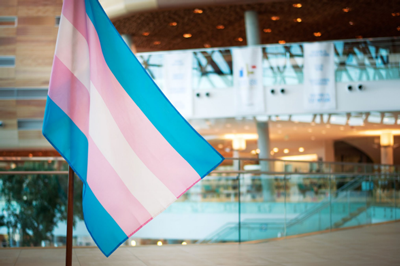
For progress to be sustainable, it is important for CSE to institutionalize diversity into our corporate practices and processes. This includes ensuring that all corporate functions undertake a Gender Based Analysis Plus review to identify and remove systemic barriers and optimize opportunities to promote equity, diversity, and inclusion. While CSE has been working to address historic barriers, a sustained and deliberate focus is required to ensure that as we implement new practices, processes, and tools, we do not reintroduce bias.
New technologies are essential in providing CSE with the business intelligence required to foster an inclusive organization. How we communicate with people both inside and outside our organization is essential in framing perceptions of CSE as respectful and welcoming. Ensuring that our security assurance and security screening practices are appropriate, and our recruitment tools are effective, are all part of institutionalizing diversity within CSE. Obligations under the Employment Equity Act and the Official Languages Act, among other pieces of legislation, require us to put in place specific measures. It has also become clear that, to secure and sustain progress made in promoting equity, diversity and inclusion, ongoing engagement by the Chief and Executive Committee is required. To support this objective, CSE will:
- Dedicate a senior level position supported by a small secretariat to support the promotion of equity, diversity, and inclusion and to act as an advocate with ExCom on issues related to our people.
- Build a more robust team supporting equity, diversity, and inclusion within Corporate Services.
- Facilitate and encourage participation of persons in equity and affinity groups.
- Ensure that the implementation of new human resources technology is done in a manner consistent with the principles of this framework.
- Review our approach to recruitment and career development and progression to actively remove barriers, provide appropriate support, and increase representation of historically excluded groups of persons including:
- Women
- Indigenous persons
- Black Canadians
- Persons from racialized communities
- Francophones
- Persons with disabilities
- Two Spirit, lesbian, gay, bisexual, transgender, intersex, and other marginalized communities
- Neurodivergent persons
- Integrate equity, diversity, and inclusion criteria into succession planning through the deliberations of promotional boards such as EORC and MORC. Success can be measured through both increased representation and integration of inclusive policies.
- Review CSE’s approach to Official Languages to increase use of French in the workplace, while removing barriers to accessing Official Language training for historically underrepresented groups in the workplace.
- Review security screening and security assurance criteria, processes, and practices in consultation with CSE affinity groups and adjusted in a manner consistent with the principles of this framework.
- Develop and implement an equity, diversity, and inclusion plan for facilities management to address physical barriers and advance employees’ sense of belonging through inclusive changes to CSE facilities.
- Develop together with affinity groups and supported by managers at all levels, a learning and development equity, diversity and inclusion plan and promote training on several thematic areas, including:
- An inclusive onboarding process for new recruits
- Gender Based Analysis Plus
- Reconciliation with Indigenous Peoples
- Accessibility
- Anti-racism and anti-discrimination (including addressing anti-Black, anti-Asian racism, exclusion of 2SLGBTQ+ persons, Islamophobia, and anti-semitism)
- Active use of French in the workplace
- Neurodiversity
Element 4 – Measuring efforts and tracking progress
As a data and evidence-driven organization, CSE recognizes that the collection and analysis of data is important. That said, our approach to equity, diversity and inclusion is not driven by quotas or numbers. Our values are based on an understanding that representation of historically excluded persons will only increase if we focus on building an inclusive and welcoming culture. We use data to help us assess where we are today and inform our plans and investments against the broader objectives of a healthy, high functioning and inclusive community of respected peers.
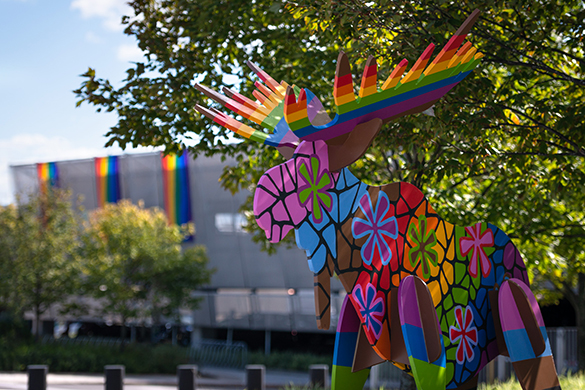
Data collected and reported over the years under the Employment Equity Act continues to show we have work to do to adequately report and address representation at CSE. Disaggregating data to look more closely at where barriers persist will help us evaluate our efforts in removing these barriers. Data associated with the experiences of our employees and of Canadians will help us refine our approaches and be responsive to evolving needs. This is important in crafting human resource and people-centered policies. It is also important in ensuring that the programs and services we deliver are accessible by all Canadians.
Ensuring that this data is collected and available has been a primary request of CSE’s equity and affinity groups. While ensuring we fully protect the privacy of our employees and Canadians, it is important that the aggregate data and information we acquire be available to our employees and to Canadians. This transparency is an essential part of building social license for security organizations to operate and demonstrates to all Canadians that we are aiming to reflect Canada as we implement our mission. To help us measure our efforts and monitor the implementation of this framework, we will:
- Ensure that our human resources software provides timely and accurate demographic business intelligence to all managers at CSE.
- Use the data collected to ensure that our processes are free from discrimination and bias in a range of key areas including:
- Recruitment
- Career progression
- Pay equity
- Encourage participation in self-identification for the purposes of the Employment Equity Act.
- Encourage participation of all staff in the Public Service Employee Survey, and complement the data collected through occasional employee surveys, including at the Directorate level, that recognize the sensitive nature of our work and the desire of some employees to fully protect their participation in data collection initiatives.
- Develop a process to collect information that disaggregates demographic data on the public’s use of CSE services, advice, and guidance.
- Continue to respect the Privacy Act as we acquire data and information on the demographics of our organization and how Canadians access and use our services.
- Develop key performance indicators for Activities undertaken under this framework and make them available.
- Report annually on the implementation of the framework.
- Report on progress on initiatives will be shared with CSE’s governance structures and communicated to all CSE employees.
- Integrate support for equity, diversity, and inclusion into performance agreements.
- Encourage all managers to have conversations with their teams related to the experience of employees in their work areas and on the effect of their policies and practices on broader Canadian society.
Element 5 – Creating positive experiences

As a growing community, it is essential that the experiences of equity, diversity and inclusion be positive. We know that measures aimed at addressing historic inequality and exclusion are not reverse discrimination, but rather a leveling of the playing field to ensure that we can all dedicate ourselves to the implementation of our important mission on behalf of all Canadians. It is about creating positive experience for all employees and for Canadians that engage with us.
There have been opportunities to have fun while we continue our important discussions on equity, diversity, and inclusion. The benefits that come from sharing diverse forms of cultural expression, food, music, and stories build a sense of camaraderie. We continue to hear every day, that our employees like and want to experience a diversity of cultures and languages every day. We will continue to engage affinity, equity, and other groups in building those shared experiences as we build the inclusive community we all want to have at CSE.
Some of the activities we have done in the past and will continue to do in the future include:
- Encouraging participation of colleagues in CSE and government-wide affinity and equity groups.
- Building on the existing diversity and inclusion community on MS Teams to foster sharing experiences, stories, and information.
- Hosting multicultural fairs, days, and information sessions to enable colleagues to learn about the diverse communities at CSE.
- Participating in community outreach events including:
- Indigenous celebrations and commemorations
- 2SLGBTIQ+ Pride Parades
- International Women’s Day
- Celebrations of Black History Month, Asian Heritage Month
- Hackergal and other activities fostering gender-inclusion
- Promote group health and wellness, including through sport:
- Zumba
- Cycling
- Running
- Basketball
- Volleyball
- Football
- Soccer
- Sharing of promotional material supporting diversity (lanyards, pins, magnets, and stickers).
- Empowering affinity and equity groups to develop and host a wide range of activities.
- Displaying inclusive banners, flags, and lighting.
- Painting sidewalks and other artistic endeavors (i.e., Rainbow Diversity Moose).
Conclusion

One CSE is our aspiration. An inspired workforce is at the heart of our shared vision for our organization as expressed in CSE 2025 and it will take every one of us to achieve our objective. As we reflect on our values as an organization and try to abide by the principles of this framework, we recognize that we will not always live up to our intent. We continue to require a shared sense of empathy and understanding that we are all trying to do our best. We are all trying to balance complex and at times competing priorities as we strive to achieve our goals.
The Principles, Strategic Elements and Action Plan that comprise this framework are meant to be living documents. Some things will be easy to do. Others will be challenging, costly and take time. This framework provides guidance on how we need to integrate equity, diversity, and inclusion into our everyday activities. It should foster conversations – even debate. It should provide reassurance that our ambition is a fairer more just workplace and community. It is our commitment to each other and to Canadians, that CSE is a dynamic, innovative, creative, and inclusive organization that is there to protect and advance our shared interests.
We are on a journey together and all of us have a direct role to play to help us get there.